A to Z Guide to Customer Experience Definitions and Terms

Last updated on March 8, 2024
The focus on enhancing the customer experience has gained traction in recent years. As businesses recognize its value, the shift from a product-centered approach to a customer-centric one continues.
Our Customer Experience Glossary covers everything you need to know, from clear definitions of key terminology to a comprehensive overview of the topic. Whether you’re new to customer experience or seeking inspiration, this guide serves as your ultimate resource for exploring and delving deeper into this exciting field.
A to Z Guide to Customer Experience Definitions and Terms
In This Article:
Actionability
Actionability is the result of analytics leading to concrete decisions and changes and actions within the company. Actionability is also, as we believe, one of the essential aspects of customer experience management. At the same time, it is also what most companies are missing.
How do you take action on customer experience?
Listen to your customers.
Actions include short- and long-term follow-ups. As short-term actions, you should be able to follow up with each individual responder, especially taking care of critical comments. Long-term actions are based on the analytics results of customer feedback.
Later, communicate the changes and improvements you’ve done based on customer feedback back to your customers. In both cases, follow-up is a necessity, not a choice, if you want to build strong relationships with your customers.
Acting on customer feedback doesn’t mean doing one thing. It means doing many things on many levels of an organization. Depending on the organization impacted, this can include (for instance) some of the following items:
- Fixes to the existing product (e.g. software bug fixes, wrong information corrected on the website)
- Product development decisions: reprioritizing things on the product development roadmap taking the feedback into account (e.g. including an improved camera in the next generation of the smartphone)
- Training and new incentives to personnel to adjust their behavior (e.g. more friendly behavior in customer service)
- Marketing to take the info into account in better targeting (e.g. upselling to the most loyal customers)
- Process changes (e.g. informing the customer more often about how the repair is proceeding)
Only after you have acted on feedback, customer experience processes are developing.
Artificial Intelligence
Artificial Intelligence (AI) is still the same old good AI, but now it’s brought to the customer experience field. According to Finance Digest, 95% of customer interactions will be managed with AI by 2025.
The most important AI technologies, that are relevant for analyzing customer feedback, fall in the area of natural language processing (NLP) and machine learning. Both groups of technologies can be utilized to make analytics more actionable.

With AI, you can get answers to most of your “why” questions. Why is NPS® going up or down? Why are your customers turning away from you? Why is the retention of your customers so high/low? But machine learning technologies can also help you to move from diagnostic to predictive analytics: if I fix this issue in my customer experience, how much will my churn decrease? If we make a decision to invest less in customer service agents, how much will it decrease my customer satisfaction?
By the way, did you know that Lumoa’s analytics is powered by AI?
B2B Customer Experience
B2B Customer Experience is, simply put, the experience and interactions with your company of a B2B customer. The situation when B2B CX was very distant from B2C CX has been rapidly changing.
Now at least 80% of B2B buyers now expect the same buying experience as B2C customers. We’re moving towards a personalized omnichannel experience in B2B customer journeys.
B2C Customer Experience
B2C Customer Experience refers to how a B2C customer perceives his buying experience and further interactions with your company. Same as with B2B customers, B2C customers expect a consistent and personalized omnichannel experience.
If you want to know, how B2C CX is different from B2B CX, check:
- this insightful article, written by Lynn Hunsaker
- “The big difference between B2B customer experience and B2C” in MarketingMag
Brand Experience
Brand experience is how you design, see and want your customer experience to be. Brand experience is a very close concept to customer experience, except the latter, refers to how customers reflect on your company.
If you’re hungry for knowledge, check also:
- This article by Blake Morgan on the difference between Brand and Customer Experience,
- “Brand Or Customer Experience: Who Leads, Who Follows?” by David Cooperstein
Churn
Customer churn happens when a customer/subscriber stops doing business with a company. Customer churn is the opposite of retention. So why should you care? Customer churn is a critical metric because it is much less expensive to retain existing customers than it is to acquire new customers.
Although customer churn might be calculated in different ways, generally the practice is to count the total amount of lost customers, percentage of lost customers, or lost business value within a specific time range.
The optimal way to reduce customer churn is to improve customer experience. Although it might sound hard to implement, in reality, there’re modern tools that can help you with that.
Find more sources on how to deal with customer churn here:
- “How to Reduce Customer Churn: 6 Helpful Tips to Try” by Hubspot,
- “6 ways you can improve churn rate and increase revenue” by Kissmetrics,
- “Tips from 32 CX Pros how to reduce customer churn” by NGData.
Customer-Centricity
Customer centricity refers to customer-oriented culture in the company. The essentials include the shared targets, shared understanding, and the voice of the customer program implemented across the organization.
According to Forrester, the ladder to customer-centric transformation consists of 5 steps:
- Secure the executive support: customer experience transformation is set up from the top. Secure the support of the C-suite executives since Forrester stated “Every successful transformation we studied began with a customer experience epiphany by a CEO or COO.”
- Build a cross-functional CX team: get the key players from the whole company (chief executives, heads of departments) onboard CX transformation.
- Create a shared understanding: create a shared vision and targets for the whole company to follow. Share data and results of the customer experience analytics in an easy-to-use tool. This ensures that there is a shared understanding of what matters and the company can shift from rumors and opinions to fact-based decision-making.
- Involve all the employees in the transformation: motivate the employees of the company to deliver a great customer experience. Include customer-centricity in daily operations and communications inside the company.
- Build CX into the culture: build long-lasting principles oriented on customer success. Support consistent employee training, add customer-centricity into the principles and mission, and involve cx training in the onboarding program.
A handful of inspiring articles on customer centricity:
- How to empower your organization to improve customer experience by Lumoa,
- “7 Secrets Of Building A Customer-Centric Company Culture” by Micah Solomon.
Customer Effort Score (CES)
Customer Effort Score (CES) is a customer experience metric used to measure customer effort and customer satisfaction. It involves measuring customer effort on customer service interactions, such as the number of customer emails received, the length of customer wait times, and the number of customer complaints.
Customer Engagement
Customer engagement is a term used to refer to customer interactions with a company, product, or service. It encompasses activities such as customer retention, customer loyalty programs, customer feedback surveys, customer reviews and ratings, customer panel discussion groups, customer support services, and more.
In the context of customer experience, customer engagement is an essential element in creating strong customer relationships and customer loyalty. By understanding customer needs, preferences, and behaviors, businesses can work to create and maintain customer engagement strategies that meet customer expectations.
This helps to ensure customer satisfaction and builds long-term customer loyalty.
Customer Experience
Customer Experience refers to how customers perceive their interactions with your company. Customer experience is constructed in direct or indirect interaction with your company but it always involves the subjective response of the customer. Therefore, you can never fully determine it.
Customer experience has been a popular business topic for the last couple of years and experts are still discussing of what customer experience truly is. Here’re some variations of the definition:
- “It’s all of the steps a buyer takes to get and use a solution from the time of the buyer’s realization of a need until the buyer deems the need no longer exists.” – Lynn Hunsaker for ClearAction.
- “It’s the perception the customer has of your brand.” – Blake Morgan for Forbes.
- “It’s every contact the customer has with your people, your product, and the way it is delivered. It includes service, packaging, the actual product itself and more.” – Shep Hyken.
According to Temkin Experience Ratings (2017), there are four key competencies businesses must sustain to achieve long-lasting customer experience success.
- Purposeful Leadership: Leaders operate consistently with a clear set of values.
- Employee Engagement: Employees are aligned with the goals of the organization.
- Compelling Brand Values: Brand promises drive how the organization treats customers.
- Customer Connectedness: Customer insights are infused across the organization.
More on customer experience if you’re curious:
- Complete guide: how to improve customer experience,
- What is customer experience (CX)? 7 industry experts weigh in by CX thought leaders and experts,
- “The Value of Customer Experience, Quantified” by Peter Kriss for HBR.
Customer Experience Analytics
Customer experience analytics is an important customer experience strategy that helps businesses measure customer satisfaction, uncover customer insights and identify customer pain points.
It involves analyzing customer data such as customer feedback surveys, customer reviews, customer support inquiries, and more. By leveraging customer experience analytics, businesses can gain a better understanding of customer needs and preferences, which can help inform customer experience strategies that meet customer expectations.
Customer Experience Design
Customer experience design (CXD) is a customer experience strategy used to create customer experiences that meet customer needs and drive customer loyalty.
It involves creating customer touchpoints, analyzing customer feedback and data, and leveraging customer insights to build customer-centric products/services. By understanding customer needs and preferences, businesses can create customer experiences that drive customer engagement and customer loyalty. Additionally, customer experience design can be used to identify customer pain points and customer service issues that need to be addressed in order to improve customer satisfaction. By leveraging customer experience design, businesses can create customer experiences that drive customer loyalty and business growth.
Customer Experience Management
Customer Experience Management (CEM, CXM) is tracking and understanding your customers’ experience, acting on that understanding, and closing the loop with the customer. Gartner defines it as “the practice of designing and reacting to customer interactions to meet or exceed customer expectations and, thus, increase customer satisfaction, loyalty and advocacy“.
CM strategy in the company could be decided into 6 components defined by Bob Hayes for CustomerThink.
- Strategy: How companies incorporate CEM into long-term plans/vision/mission to achieve objectives and goals
- Governance: The formal policies (rules, roles and requests) governing how the CEM program should be implemented
- Business Process Integration: Embedding CEM processes/data into all other business operations
- Method: How customer feedback is collected, measured and monitored
- Reporting: How customer feedback is analyzed, synthesized and disseminated
- Research: Additional customer insight provided by deeper research into various forms of customer data (quantitative and qualitative)
Bringing all the components into one centralized system is what defines proper CEM strategy.
Customer Feedback Loops
Customer feedback loops are customer experience strategies used to capture customer feedback and quickly respond to customer inquiries.
It involves creating a customer feedback loop that allows customers to provide feedback on their customer service experiences, which enables businesses to proactively address customer issues and improve customer satisfaction levels.
By understanding customer needs and expectations, businesses can design customer experiences that meet customer expectations and drive customer loyalty.
Additionally, customer feedback loops can be used to identify customer pain points and customer service issues that need to be addressed in order to improve customer satisfaction.
Customer-Generated Content (CGC)
Customer-generated content (CGC) is a customer experience strategy used to engage customers and build customer loyalty.
In comparison to traditional marketing or advertising, CGC is an authentic and important part of a robust content strategy. It is trusted by 92% of consumers.
It involves leveraging customer feedback, reviews, videos, and other customer-created content to create an authentic customer experience. By engaging customers in two-way conversations and encouraging them to provide feedback and reviews, businesses can gain valuable insights into customer experiences and customer needs.
Additionally, customer-generated content can be used to build customer loyalty by highlighting customer stories and recognizing customer achievements.
Customer Satisfaction
Customer Satisfaction, or CSAT, is a broad term that describes many different types of customer surveys. The surveys are usually sent to customers shortly after an interaction with a company is complete, for example, after a customer has contacted customer support. This type of survey is a great way to close the loop on customer interaction and make sure that you’ve met their expectations.
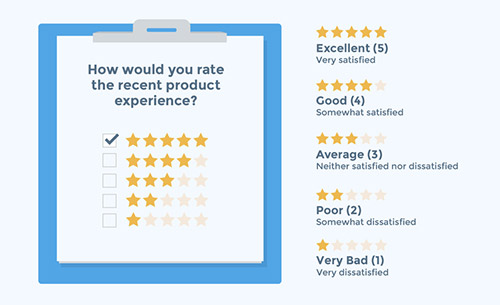
To summarize, CSAT is a very good tool if you want to measure how a customer is satisfied with one-time interaction. CSAT can also easily adapt to the particular needs of your organization. However, if you want to measure loyalty and aim for long-term goals, check the Net Promoter System.
Wondering which metric to choose? Check this out:
Customer Segmentation
Customer segmentation is a customer experience strategy used to divide customers into distinct groups that share similar characteristics.
By understanding customer segments and their needs, businesses can better tailor services and solutions that meet customer expectations. Customer segmentation typically involves analyzing customer data such as customer demographics, purchase history, customer feedback surveys, customer reviews, and more.
This allows companies to better understand customer needs and preferences, which in turn can help inform customer experience strategies that meet customer expectations. By leveraging customer segmentation to create tailored customer experiences, businesses can drive customer loyalty and business growth.
Customer Service/Support
Customer service, or customer support, is often mixed up with customer experience. Although both concepts are related to customers, customer service is just a part of the customer experience. Customer service is the actual assistance or advice provided by the company to people, who want to use or are already using the product/service.
According to LivePerson’s Connecting with Consumers report, 83% of customers needed some kind of support during their online journey and at the same time Groove mentioned that 82% of customers leave a company because of a bad customer service experience.
According to Buffer, the main customer support metrics are the following:
- First Response Time
- Problem Resolution Time
- Was the Customer Able to Find What They Were Looking For?
- Overall Customer Experience Rating
- Contact Volume by Channel
That’s right, efficient customer support could drive your customer experience to the skies, boost the retention rates and decrease customer churn.
Take care of your customer service, check:
- a detailed explanation of the differences between Customer Service and Customer Experience by CustomerThink,
- “22 Customer Support Statistics ThatYou Absolutely Need to Know” by Groove
Customer Service Chatbots
Customer service chatbots are an increasingly popular customer experience strategy used to improve customer service and satisfaction.
These automated customer service agents provide real-time customer support through text-based conversations, helping customers quickly find answers and solutions to their problems.
By leveraging AI technology, customer service chatbots can better understand customer intent and automate customer support inquiries. This helps businesses reduce customer service costs, improve customer satisfaction and increase customer loyalty.
Customer Service Gamification
Customer service gamification is a customer experience strategy used to enhance customer engagement and customer loyalty.
It involves incorporating elements of game-play into customer service experiences, such as rewards for customer feedback, leaderboards for customer support agents, and contests to reward customer loyalty.
By engaging customers in fun and interactive activities, businesses can create customer experiences that drive customer engagement and customer loyalty.
Additionally, customer service gamification can be used to identify customer pain points and customer service issues that need to be addressed in order to improve customer satisfaction.
Empathy Mapping
Empathy mapping is a customer experience strategy used to gain insight into customer needs, emotions, and behaviors.
It’s an effective way to understand customer perspectives and anticipate customer needs and expectations. By understanding the customer journey from their point of view, businesses can better tailor services and solutions that address customer pain points.
Empathy maps typically include customer demographics, customer goals and needs, customer behavior, customer emotions, customer touchpoints, customer motivations and more.
Employee Net Promoter Score (eNPS)
Employee Net Promoter Score (eNPS) is a customer experience strategy used to measure employee satisfaction and loyalty.
It involves asking employees a series of questions about their experience with the company and its products/services, allowing businesses to gain insights into customer expectations and customer service quality. By understanding employee feedback, businesses can design customer experiences that meet customer needs and expectations.
Additionally, eNPS can be used to identify customer pain points and customer service issues that need to be addressed in order to improve customer satisfaction.
Feedback
Customer feedback is customers’ opinions about your product. Customer feedback helps you understand what drives your customer satisfaction rates (or impact factors*), and simultaneously, understand revenue drivers and the reasoning behind customer churn and retention.
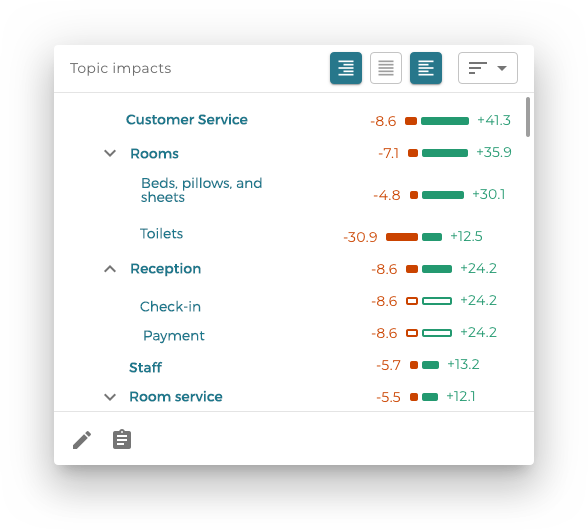
Impact Factors are an essential part of Lumoa, a tool for actionable customer feedback.
Here’s a simple detailed guide on how to collect customer feedback and how to act on
Journey
A customer journey also called a buyer’s journey, is a completely individual experience with your brand. The journey includes all the touch points and engagements that an individual has with a brand.
To borrow a definition from Forrester, “The customer journey spans a variety of touchpoints by which the customer moves from awareness to engagement and purchase. Successful brands focus on developing a seamless experience that ensures each touchpoint interconnects and contributes to the overall journey.”
For more information, check “What is the customer journey and why does it matter to your business” by SurveyMonkey.
Journey Mapping
A customer journey map is a visual representation of every interaction and activity a single customer might have with your brand. It gets complex because there’re multiple channels and ways customers might come to your brand. No doubt you want to make every customer experience as great as possible.
The process of creating a customer journey map will help you focus on the voice of your customer and listen to their wishes and needs. Most of customer journey maps focus solely on customers. Use this free customer journey map template by Columbia Road to understand a customer journey and develop business goals at the same time.
Lifecycle
Customer Lifecycle is the process that every customer goes through: from considering, purchasing, and using to maintaining loyalty to a product or service.

Customer lifecycle illustrated by Forrester.
Unlike a customer journey, which is a unique journey of an individual customer, a customer lifecycle is a process driven by a company. Multiple customer journeys can relate to the same customer lifecycle.
Don’t mix them up! Customer Lifecycle vs. Customer Journey:
- The customer lifecycle is the company’s own view on the phases the customer goes through.
- The customer journey is a unique decision path each customer goes with your brand. Each customer might have several journeys: the decision to make an initial purchase, the decision to expand the purchase (add features, etc.), the decision to purchase a new product from your company.
Metrics
Customer metrics are simply measurements used to gauge the customer – whether for loyalty and retention, marketing, or new product development. In customer experience, that means a measurement of the customer satisfaction and business value of customer experience development. Customer metrics are also referred to as customer experience KPIs. There’re different metrics used today and it is important to understand the needs of your business.
A company usually follows a set of KPIs. What metrics should you follow?
According to Mindtouch, the most actionable KPIs include:
- Net Promoter Score (NPS)
- Customer Satisfaction (CSAT)
- Customer Effort Score (CES)
- Retention Rate
- Ticket Distribution & Volume by Support Channel
- Bounce Rate & Pages Per Session
- Customer Success
The beautiful thing about KPIs is, however, that you should solely tailor them to your business. Properly integrated customer experience KPIs will expand their influence over the whole organization and should be also followed by the whole organization.
Net Promoter Score
Net Promoter Score, or often, NPS, is a numerical part of the Net Promoter System, customer metric. You have probably already seen it many times before. The Net Promoter Score is often called “The Only Number You Need to Grow”. It is calculated with the key question “How likely is it that you would recommend [your brand] to a friend or colleague?” using a 0-10 scale.
Responders are grouped into three categories: Promoters, Passives, and Detractors. Promoters (who voted 9 or 10) are loyal and happy customers, who keep buying and referring others. Passives (who voted 7 or 8) are satisfied but not enthusiastic customers. Detractors are unhappy customers who damage your brand by spreading negative word-of-mouth.

The Net Promoter Score is the calculated difference between the percentage of promoters and the percentage of detractors and could vary from -100 to 100. Although the higher the score, the better, the score of 100 means that there’s not a single detractor in your company which is a very unrealistic goal.
When setting up targets for the Net Promoter Score, you should think of three aspects.
- The score should be above 0. Having a positive score means you have more promoters than detractors.
- Aim at a score higher than the previous score you got. Improve customer experience, focus on the positive features (according to your customers) of your service/product and eliminate negative behaviors.
- Compare your score to industry standards (by region, country, industry).
London School of Economics has found a correlation between the score and revenue of the company: an average NPS increase of 7% equals 1% growth in revenue.
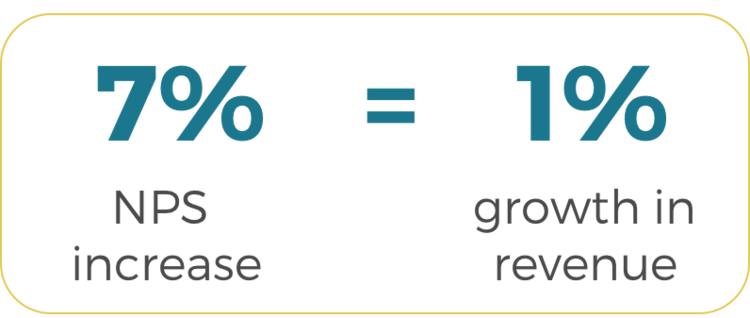
It makes the Net Promoter Score a very simple and powerful metric, yet almost meaningless alone without the whole Net Promoter System in place.
Net Promoter System
Net Promoter System, or NPS, consists of the Net Promoter Score and open text feedback. In Lumoa, we’re big fans of NPS because it’s short and simple, yet provides all the information you need to proceed with customer experience.
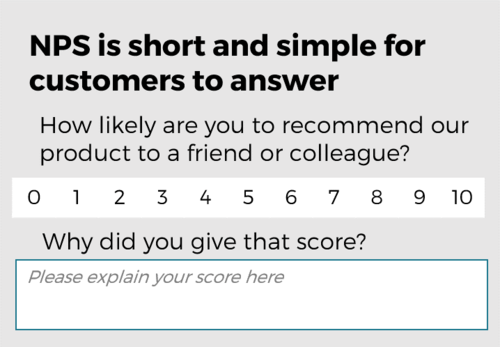
NPS typically has a very high correlation with retention: the happier the customer, the more loyal they are, and therefore the more revenue they generate for you during their customer lifetime.
Dive deeper into NPS, check:
- 4 reasons to choose NPS
- how to increase response rates of your NPS surveys
- most common mistakes and how to avoid them
Omnichannel
Omnichannel is a cross-channel sales approach that provides the customer with an integrated customer experience. Omnichannel offers a consistent, personalized experience for consumers across all channels and devices with the main goal to make the customer journey as easy as possible, and that means consistent engagement no matter where or how they interact with you.
No doubt, omnichannel communication is a definite megatrend of the customer experience in the next years. In the Forrester report “Building The B2B Omni-Channel Commerce Platform Of The Future”, it was stated that omnichannel experience already plays a crucial role for both B2B and B2C businesses.
Onboarding
Onboarding is familiarizing a new customer with the service. Often, we relate the onboarding with SaaS companies, when talking about onboarding, but it’s not a necessity.
In the SaaS business, however, onboarding has become a very usual practice. It warms up the relationship between your brand and the new user, yet at the same time educates them and increases engagement. A user, who has gone through a thoroughly-planned and beautifully-designed onboarding process is more likely to stay and become a loyal customer.
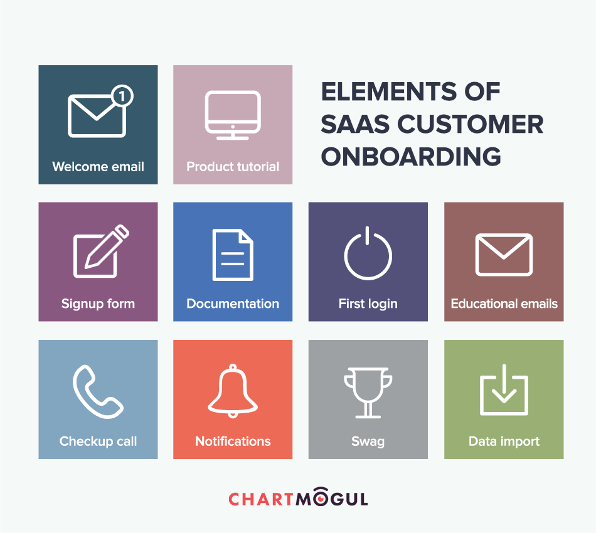
SaaS onboarding might be a complex activity, but it doesn’t have to include everything. According to ChartMogul, onboarding starts from the first sign-up and welcome email and goes all the way to the first login and engagement. Make your tool a playground and explain the rules of the game. Still, make sure it’s a personalized and consistent, yet very simple experience. To get started, check this detailed guide to SaaS onboarding.
Learn from the best.
- “10 Great Examples of Customer Onboarding That You Can Learn From” by Groove.
- “The 5 ‘Best’ User Onboarding Examples” by Appcues.
- “7 Tips for Creating Better App Onboarding Experiences” by GetSocial.
Personalization
Personalization means providing a customer experience that is tailored to the individual’s consumer preferences and specific needs. Personalization comes in all forms and shapes: targeted advertising and tailored solutions. For example, if you buy a toy for a toddler from Amazon, the next time you log in to the system, it will show you similar products that might interest you.
You might think that personalization raises a very important topic of personal privacy. Where is the border between “check this out, is this what you’re looking for” and “we’re watching you”? In fact, if done properly, personalization is an asset.
According to Marketo, over 78% of consumers will only engage offers if they have been personalized to their previous engagements with the brand and, according to Accenture, 75% of consumers prefer brands that not only recognize them by name but also recommend options based of the past purchases and know their purchase history.
Consumers are asking for personalized experiences. Now personalization is expected not only for retail businesses, but across all industries, both B2B and B2C.
Learn more about personalized marketing in Personalized Marketing: The Ulitmate Guide to WOW Your Prospects and Customers.
Retention
Customer retention is the measurement of how a business retains customers over a specific period of time. A high retention rate is what you should aim at since retaining customers costs less than acquiring them.
If it doesn’t make you work on your retention strategy just yet, think about this: loyal customers are 5x as likely to repurchase, 5x as likely to forgive, 4x as likely to refer, and 7x as likely to try a new offering according to Temkin Group.
Social Media
You might be wondering why social media is on the list.
It’s simple.
Social media is a powerful tool when it comes to customer experience.
Let statistics speak for themselves:
- Churn can increase by up to 15% if businesses fail to respond to customers over social media. (Gartner)
- 30% of customers share positive reviews via social media. (Zendesk)
- 63% of consumers read negative reviews via social media. (also Zendesk)
Social media could not only be used for customer support but should be used to actively advocate your brand. After all, a satisfied customer is the best advertising you can have.
Text Analytics
Text Analytics (text mining) includes a set of techniques that structure information arriving in text format— for instance free text customer feedback. The purpose is to convert unstructured text into meaningful structured data to support business analysis and decision-making. Topic analysis reveals topics that are most talked about.
Text analytics helps you to understand the drivers of customer satisfaction. The analytics is actionable if it supports decision-making in an optimal way and if the results of the analytics can be shared in a way the organization is empowered to act.
Touchpoint
A customer touchpoint is any interaction a customer has with your company. Touchpoints are not channels, but rather each individual activity of a customer. Touchpoints are also what a customer journey consists of.
A touchpoint should be seen from customer’s perspective. A few examples of touchpoints might be:
- “I have a need. How do I find your company?”
- “I have a question. How do I contact customer support?”
- “I want to unsubscribe. How do I cancel?”
You should know all the touchpoints in order to create a detailed customer journey and be able to improve customer experience across all channels.
Transactional Net Promoter Score (tNPS)
Transactional Net Promoter Score (tNPS) is a measure of customer satisfaction. It’s a collection and the result of gathered data and feedback about an individual’s experience with a business or service.
It involves asking customers questions about their customer service experiences, allowing businesses to measure customer loyalty and customer satisfaction levels.
Net Promoter Score (NPS) and transactional Net Promoter Score (tNPS) are both utilized to gauge customer feedback. Despite their usefulness, they assess different aspects of the customer experience.
tNPS examines specific customer transactions and pinpoints areas for improvement to ensure customer satisfaction, while NPS provides a general view of customer satisfaction through collecting survey ratings from customers.
User Experience (UX)
User experience (UX) is an essential customer experience strategy focused on creating products and services that meet customer needs and expectations.
UX involves understanding customer goals, preferences, behaviors, and pain points in order to create solutions that are easy to use and are enjoyable for customers.
It also encompasses activities such as customer feedback surveys, customer reviews and ratings, customer panel discussion groups, customer support services and more.
Voice of Customer
Voice of customer, or VoC, refers to customers’ feedback about their experiences with and expectations for your products or services. Right now, you have more VoC data than ever – it comes in the form of user behavior data, recorded phone conversations between your frontline staff and your customers, direct customer feedback, discussions on social media, and even more, largely depending on your business.
Voice of customer is not only about how to gather the customers’ feedback, but how to analyze and most importantly, act on the feedback.
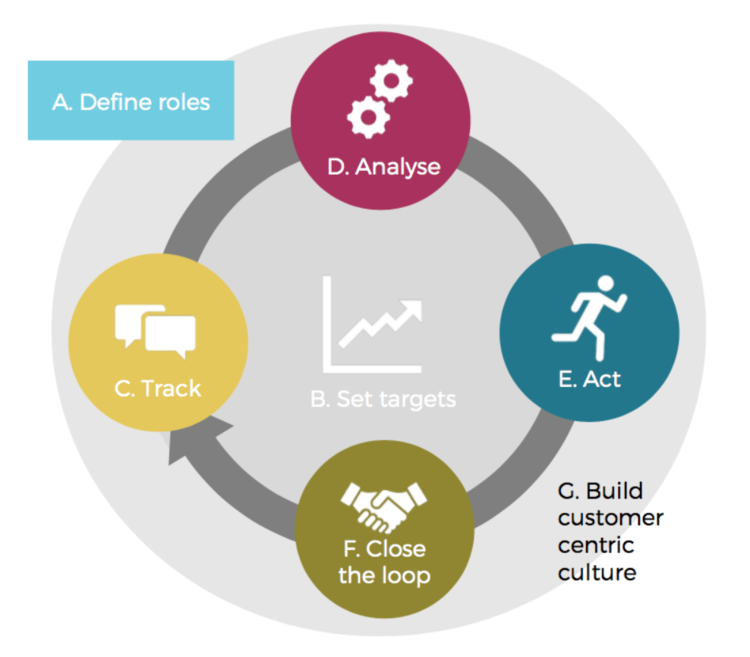
Voice of Customer should be involved in a systematic process of customer experience development in your company. The process consists of five steps:
1. COLLECT
- Understand the purpose of collecting data,
- Choose a metric (we vouch for NPS!),
- Decide on where to ask –you need to decide both on when to ask during the customer journey and which channels to use.
2. ANALYSE
- Decide on how you are going to track the results,
- Use analytics that provides you insights and enables you to make decisions.
3. ACT
- Have a follow-up plan,
- Answer the critical comments and solve these issues in individual order,
- Perform improvement actions in the organization.
4. CLOSE THE LOOP
- Communicate the improvements and changes based on customer feedback to your customers,
- Rate the success of your customer experience development.
5. SET TARGETS
- Track changes and trends in your customer experience satisfaction rates according to the implemented actions,
- Put a customer in the heart of everything you’re doing,
- Embrace customer-centric culture into daily operations.
This simple process, when done properly, will help you to hear your customer, act on customer feedback and improve customer experience in a consistent sustainable way.
